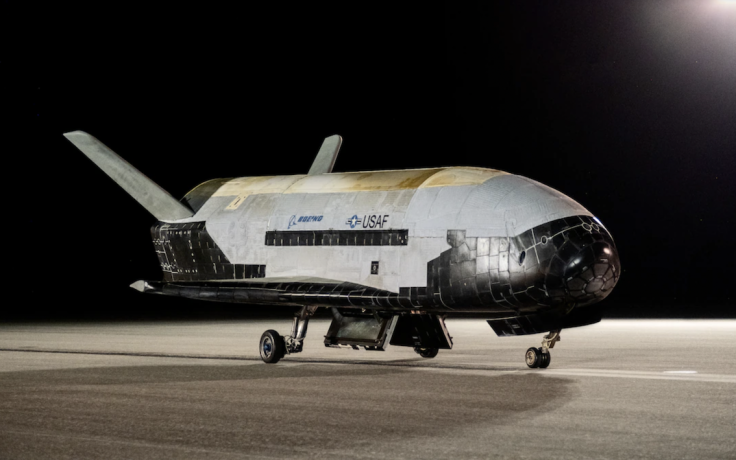The Space Force declared that the latest mission of the X-37B spaceplane was successful after completing a record-breaking two-and-a-half years or 908 days in orbit. This is the sixth successful mission of X-37B to date, which started on May 17, 2020.
The spaceplane landed at NASA's Kennedy Space Center in Florida on Saturday, November 12, NPR reports.

X-37B Mission Conducts a Number of Experiments in Space
Aside from being the longest mission, it was also the first time the X-37B flight carried a service module, according to Digital Trends. It is a ring attached to the rear of the vehicle. It will increase the number of experiments that can be hosted during a mission.
The service module allows the US Air Force (USAF) to offer low-cost space access to more partners. It was released from the spaceplane before it landed in order to keep the vehicle's aerodynamic design for its safe entry into Earth's atmosphere.
The most recent flight of the space plane involves an experiment sets up by the Naval Research Laboratory. The Photovoltaic Radiofrequency Antenna Module involves harnessing solar rays and transmitting them to the ground in the form of microwave energy.
Meanwhile, another experiment tested the effect of space radiation on various materials. According to The Verge, NASA will compare the result to the materials here on Earth.
There was also an experiment from NASA that involves testing space exposure on seeds to help "enhance space crop production."
The results of the experiment could help in future interplanetary missions. Likewise, it will be useful for the establishment of permanently inhabited bases in space.
According to USAF, the X-37B mission has two objectives. The first one is to have reusable spacecraft technologies for America's future in space. The second one is to operate experiments that can be returned to, and examined, on Earth.
Read Also: SpaceX Starlink Satellite Launch Seems to Be Going as Planned as Weather Cooperates
X-37B Greatly Helps in Conducting Scientific Experiments
The X-37B spaceplane appears like a smaller version of NASA's Space Shuttle. It first took flight in 2010. Since it was first launched, we haven't learned much about its purpose as the Space Force is tight-lipped about it.
This recent mission of the spaceplane was launched on an Atlas 5 rocker in 2020. On its previous mission, the X-37B brought a small number of satellites into space. It eventually made its return in 2019 after 780 days.
According to USAF Lieutenant Colonel Joseph Fritschen, "The X-37B continues to push the boundaries of experimentation."
He added that the ability to conduct on-orbit experiments and eventually bring them back to Earth safely for in-depth analysis has proven valuable for the Department of the Air Force and the scientific community.
According to Jim Chilton, senior vice president of Boeing Space and Launch, since the X-37B's was first launched in 2010, it has broken records and provided the US with an unparalleled capability to quickly test and integrate new space technologies."
Now that the Space Force has added the service module, it allowed them to host more experiments in the future.
Related Article: Space Force Tracking Satellites Rocket Launch: Watch Incredible Atlas V Liftoff Here!









